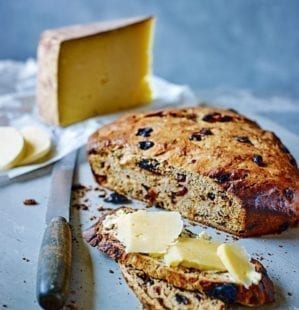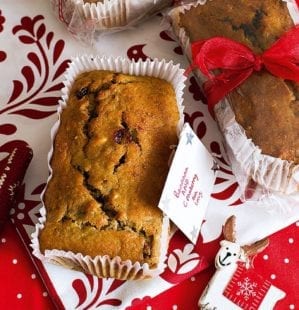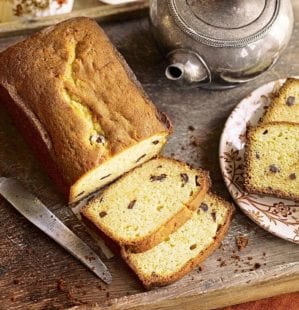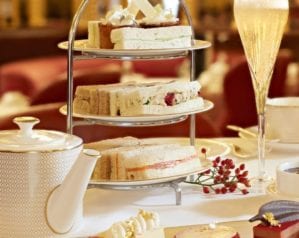
Malt loaf with homemade butter
- Published: 30 Apr 14
- Updated: 18 Mar 24
A wonderfully rich, sticky malt loaf recipe, with homemade butter to slather on top. Teatime heaven.
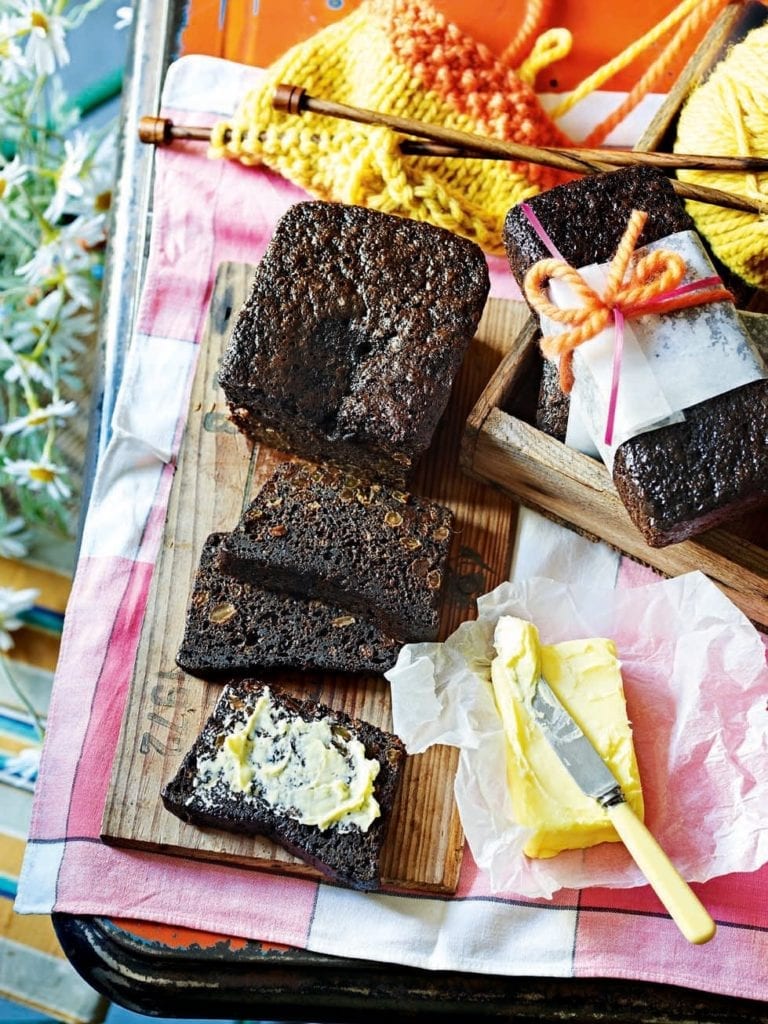
-
Serves 12
-
Hands-on time 40 min, oven time 1 hour 20-30 min, plus soaking
Ingredients
- 175g mixed raisins and sultanas
- 5 tbsp malt extract (see Know-how)
- 225ml hot English breakfast tea
- Butter for greasing
- 2 tbsp black treacle
- 85g dark brown sugar
- 2 large free-range eggs, beaten
- 225g plain flour
- 25g dark malt flour (optional; see tips)
- 1 tsp baking powder
- 1/2 tsp bicarbonate of soda
For the jersey cream butter
- 600ml jersey double cream
Method
- Put the raisins and sultanas in a large mixing bowl with 1 tbsp of the malt extract, then pour over the hot tea. Leave to stand, covered, for at least 2 hours, preferably overnight.
- Heat the oven to 150°C/fan130°C/ gas 2. Grease and line a 1 litre loaf tin with baking paper. Add the remaining 4 tbsp malt extract, the treacle and sugar to the soaked fruit. Beat the eggs into the mixture, then stir in the flours, baking powder and bicarbonate of soda. Pour the mixture into the prepared tin, then bake on the middle shelf for 1 hour 20-30 minutes. The malt loaf should be firm and well risen, and a skewer pushed into the centre should come out a little sticky but not wet. Leave to cool completely in the tin (see Make Ahead).
- To make the butter, pour the cream into a sterilised mixing bowl (see Know-how). Beat with an electric hand mixer on a medium speed until the cream becomes stiff, then continue to whip until the cream collapses and separates into butterfat and buttermilk. Line a sieve with clean muslin or a new J-cloth and set over a bowl. Pour in the cream mixture and allow the buttermilk to drain into the bowl (you can use this for making bread or other cakes). Put the butter from the sieve into another sterilised bowl, then beat briefly to extract even more buttermilk. Drain again.
- Fill a bowl with very cold or iced water. Add the butter and knead it with your hands. If there’s still any buttermilk left, it will come out in the water. Change the water 2 or 3 times (see tips). The butter is ready when the water stays clean.
- With cold hands (have a cold tap running or a bowl of iced water to hand), lift the butter onto a board and pat into two even-size blocks (see tips). This shaping will help release some moisture. You can then use pre-soaked butter paddles to press the blocks and make them more evenly shaped, if you like (see Know-how). Wrap the butter in baking paper or waxed paper, then chill until needed (see Make Ahead).
- Serve the malt loaf in slices spread with some jersey cream butter.
- Recipe from May 2014 Issue
Nutrition
- Calories
- 300kcals
- Fat
- 15g (8.7g saturated)
- Protein
- 4.5g
- Carbohydrates
- 37.5g (22.2g sugars)
- Fibre
- 1.3g
- Salt
- 0.3g
delicious. tips
Malt flour adds an extra bittersweet hit to malt loaf. Find it online at flourbin.com or, if you can’t get hold of it, use an extra 25g plain flour. It’s important to remove all the buttermilk from the butter – any left behind could turn the butter rancid. If you prefer salted butter, add sea salt to taste just before shaping. Some people add it to the cream before whisking, but you’ll lose some of the saltiness when you remove the buttermilk.
Malt loaf benefits from a couple of days’ maturing, during which time it will become stickier and richer. Wrap in baking paper and keep in a tin. The butter will keep in the fridge, well-wrapped, for up to a week, or freeze half of it for up to 3 months.
Malt extract is made from germinated barley grains, which are boiled to release their sugars, then concentrated into a treacly paste.
To sterilise a mixing bowl, wash in warm soapy water, rinse well, then fill with hot water from the kettle. Drain and allow to dry, upside-down, on a clean tea towel.
Butter paddles are small, ridged pieces of wood that are used to shape handmade butter. Look out for them at antiques markets, or buy new ones online (£7.99 from lakeland.co.uk). They need to be soaked in iced water for at least 30 minutes before using, to prevent the butter sticking.
Buy ingredients online
Rate & review
Rate
Reviews
Subscribe to our magazine
Food stories, skills and tested recipes, straight to your door... Enjoy 5 issues for just £5 with our special introductory offer.
Subscribe
Unleash your inner chef
Looking for inspiration? Receive the latest recipes with our newsletter

